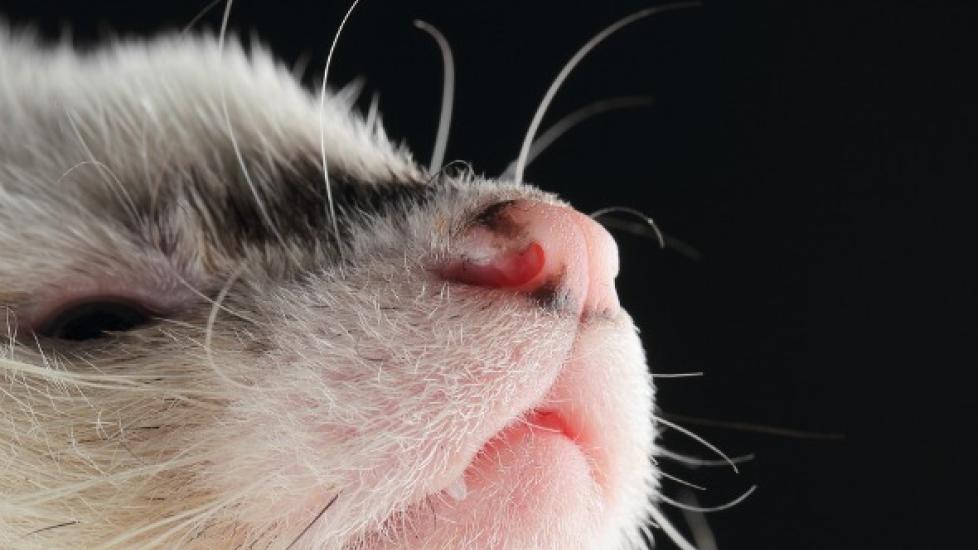Difficulty and/or Rapid Breathing in Ferrets
Dyspnea, Tachypnea, and Hyperpnea in Ferrets
Dyspnea, tachypnea, and hyperpnea are all terms that describe disturbed breathing patterns in ferrets. Dyspnea refers to the distress often associated with difficulty breathing or labored breathing; tachypnea, meanwhile, is rapid or fast breathing; and hyperpnea is deep breathing. Typically these breathing difficulties are associated with some ailment or stressful situation.
Symptoms and Types
The type of breathing difficulty (dyspnea, tachypnea, hyperpnea) experienced by the ferret will typically determine what type of symptoms are displayed. Some of the more common signs and symptoms include:
- Restlessness
- Pneumonia
- Open mouth breathing
- Nostril flaring when breathing
- Noisy breathing (stridor)
- Upper airway obstruction
- Excessive sneezing with discharge, especially among ferrets with concurrent respiratory tract infections
- Insomnia or trouble sleeping, especially among ferrets with congestive heart failure or those with hernias in the diaphragm
Also, although it is rare in ferrets, coughing may occur in ferrets with dyspnea.
Causes
The causes for labored breathing, rapid breathing, or deep breathing in ferrets may include central nervous system diseases, shock, anemia, congestive heart failure, respiratory diseases, lack of oxygen (hypoxia) and related causes. Other common causes include:
- Anemia
- Heartworm infection
- Irregular heartbeat (arrhythmia)
- Trauma and inflammation
- Immunosuppression (suppressed immune system)
Diagnosis
Breathing difficulties can be a life threatening emergency. Therefore, you will need to bring the ferret to a veterinarian as soon as possible. There, you will provide a thorough history of your ferret's health, onset of symptoms, and possible incidents that might have preceded this condition. During the examination, your veterinarian will carefully observe how your ferret's breathing, listening to its chest for evidence of a heart murmur or fluid in the lungs. Your ferret's gum color will be carefully evaluated as well, since the color of the gums can indicate whether oxygen is being delivered to the organs (hypoxemia) effectively, or if it there is a low red blood cell count (anemia).
Diagnostic tests that can help identify labored breathing may include inflammatory markers and cytologic examinations, which may reveal bacterial growths and existence of pulmonary diseases or cardiovascular diseases.
Treatment
Treatment will depend on the final diagnosis. Most breathing problems require admittance into a hospital to employ oxygen therapy and to administer medication to resolve the underlying cause. Sometimes a procedure called a tracheostomy is needed, whereby a tube is inserted through an incision in the ferret's trachea.
Living and Management
With proper management and care, ferrets with less severe forms of dyspnea, tachypnea, and hyperpnea do well. However, it is best if you confine your ferret to cage rest so that it does not overexert itself.
